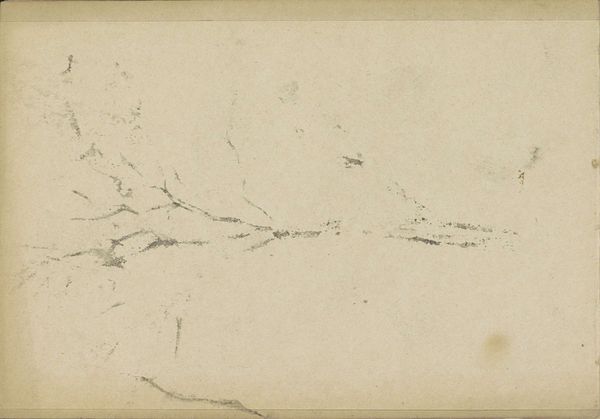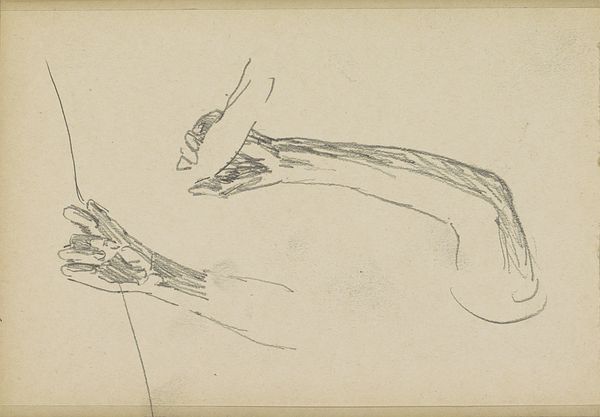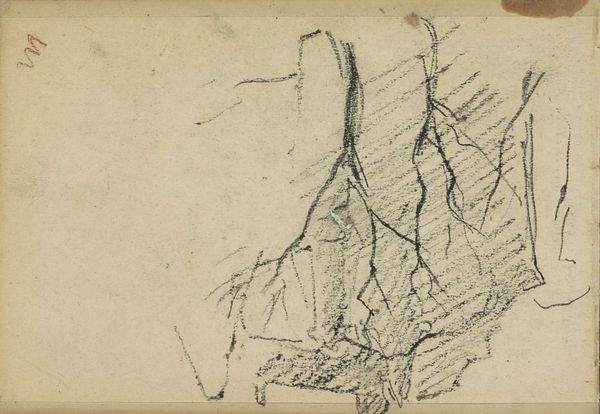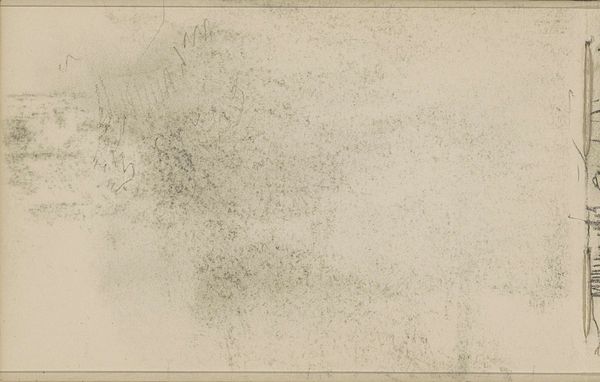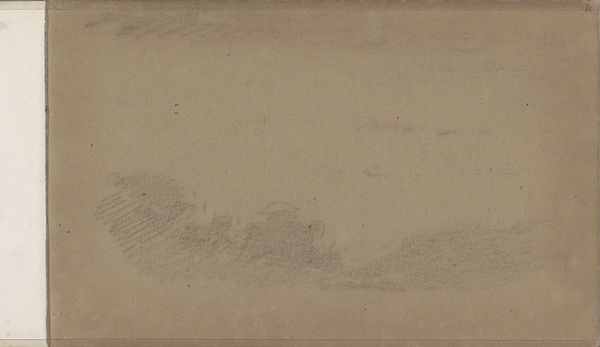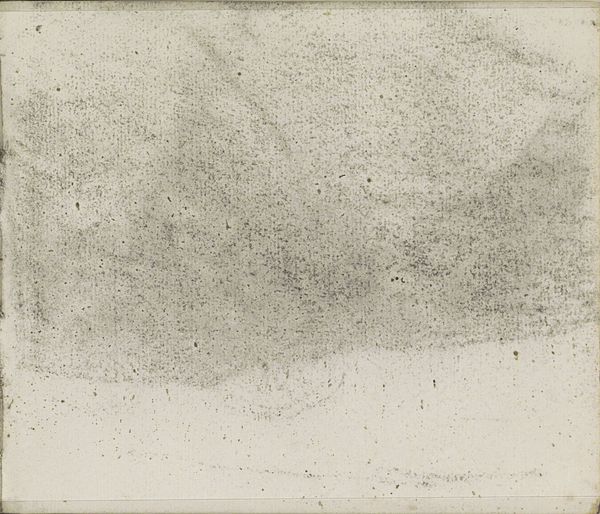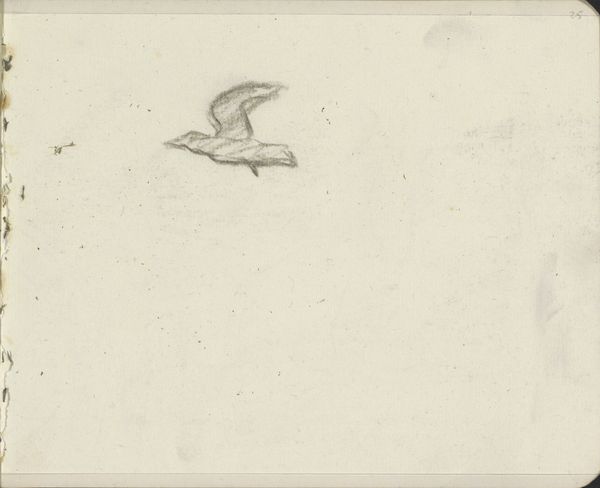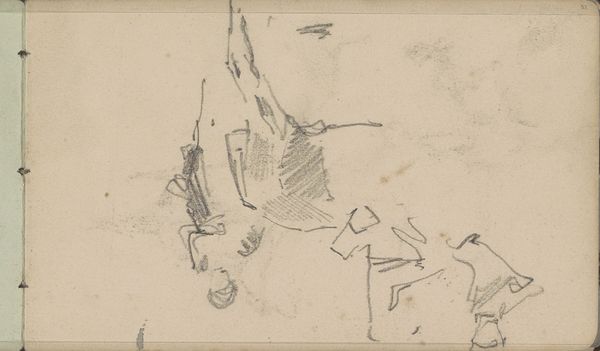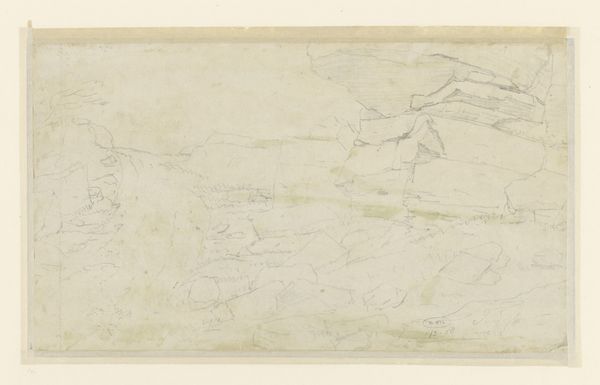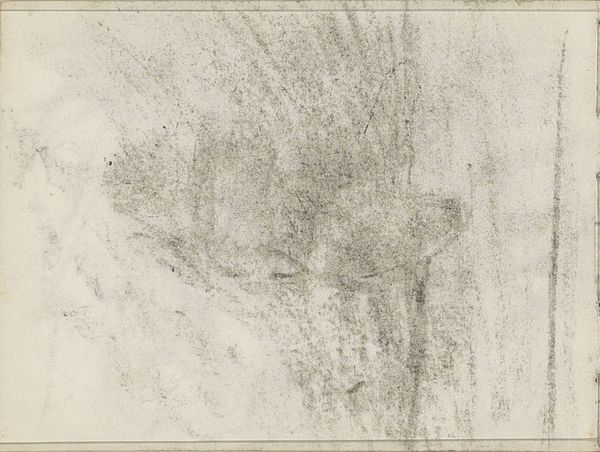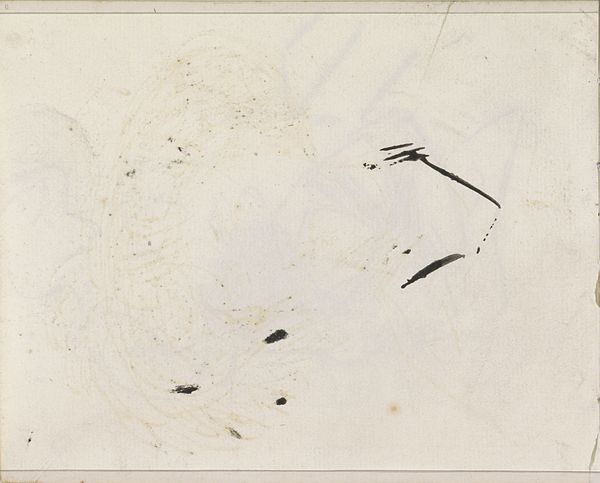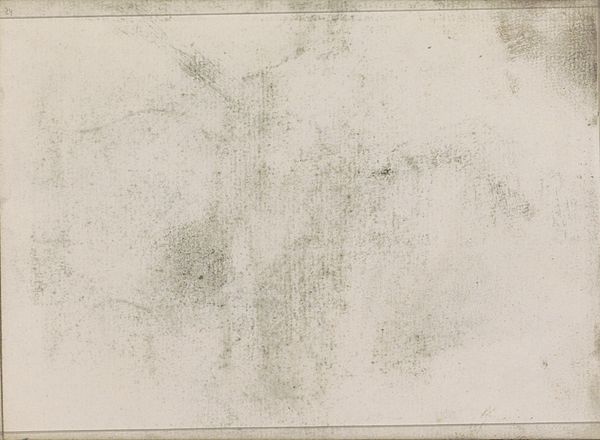
drawing, paper, pencil
#
drawing
#
impressionism
#
landscape
#
paper
#
pencil
#
abstraction
#
line
Copyright: Rijks Museum: Open Domain
Curator: What strikes you first about this drawing? Editor: An immediate sense of ephemerality. It's wispy and delicate, almost on the verge of disappearing. It's as if the clouds themselves are being breathed onto the page. Curator: I find Breitner's "Wolkenlucht," or "Cloudscape," made circa 1881-1883, interesting for its abstraction. Drawn in pencil on paper, it captures a moment, yes, but also something timeless. Consider Breitner’s broader oeuvre; it is largely concerned with documenting the working classes, which presents a striking contrast against the supposed nothingness of the sky here. Editor: It is indeed interesting when juxtaposed against his other work, but even here the image of the clouds signifies the all-encompassing weight of change—of social changes for his subjects and even the world that surrounds us—much like how storm clouds roll overhead before the thunder strikes. Clouds are a common symbol, and in an urbanizing era they represented both change and freedom. What could be further away than factory life, eh? Curator: Precisely, which begs the question: is this simply a fleeting sketch, or does it function as a meditation on impermanence in the face of rapid societal transformation in the Netherlands during that period? The industrial revolution, with its drastic socio-economic effects, reshaped individual lives. Breitner often engaged with this by highlighting class conflict, social inequity and its emotional impact on individuals. The use of abstraction provides this space to imagine, and not to fix. Editor: Right, its abstraction invites reflection—it also reminds me of older symbolist landscape drawings which invite transcendence via visual motifs like the ocean, trees and, of course, clouds. What you said about a “fixed” image got me thinking...what sort of identity are we imprinting upon the environment when capturing its likeness and claiming its representational permanence? What identity does our industrial footprint make? I see an anxious, fragile world order emerging within the cloud. Curator: So, perhaps, by turning his eye toward the sky, Breitner, through this almost ungraspable subject matter, found an opening for himself to both acknowledge and circumvent the political moment. The cloud becomes, in this sense, not merely an aesthetic object but a conceptual territory, imbued with symbolic tension. It speaks volumes about our modern relationship with labor. Editor: Indeed, leaving us to ponder the heaviness of a seemingly weightless form, but even this has great historical depth—something any contemporary observer should take the time to consider! Curator: Exactly, to really *see* beyond what’s simply present in the gallery is often the real challenge, wouldn’t you agree?
Comments
No comments
Be the first to comment and join the conversation on the ultimate creative platform.
